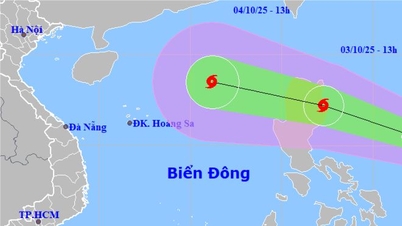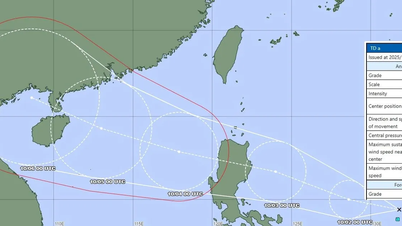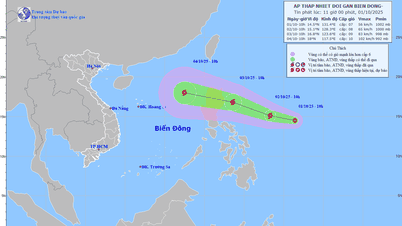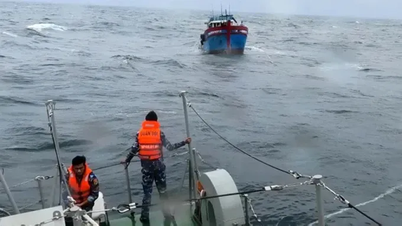Scientists involved in the project claim that with the new radar system, warships will be able to detect ballistic missiles from a remarkable distance of up to 4,500 km (2,800 miles). This detection range is roughly equivalent to the geographical distance between southern China and northern Australia.
Unlike most warship radar systems that are limited by power requirements and only have a range of a few hundred kilometers, the researchers claim to have overcome this obstacle, making the radar system suitable for newer ships with electric propulsion systems.
Custom capacitors, huge number of transceivers
According to an article published in the journal Electric Machines & Control, the new generation of active phased array radars integrates “tens of thousands” of transceivers, significantly more than conventional systems today. Each transceiver unit in the system can operate as an independent radar with the ability to send and receive signals.

When these units are combined, they create a super-powerful electromagnetic pulse signal reaching an intensity of up to 30 megawatts, a level capable of disrupting or significantly disabling the electronic systems currently equipped on any naval warship today.
A Beijing-based radar scientist said that installing a 30-megawatt radar on a warship was once considered science fiction. The scientist said that with its increasingly powerful naval radar system, China wants to exert greater influence and be able to suppress the United States in the South China Sea.
Developing long-range radar systems faces challenges of scale and power. For example, the world's most powerful radar, the 32-megawatt AN/FPS-85 in Florida, requires more than 23,000 square meters of space.
However, technological advances and 5G applications have significantly reduced the size of radars, but power is still an issue. To overcome these problems, researchers have to separate the radar from the ship's power grid and use large capacitors as buffers to protect other electronic equipment.

These custom capacitors significantly reduce electrical shock, making them suitable for radar systems. Weighing in at just over a ton, the entire power supply system, including capacitors and other components, is compact enough to fit on a ship.
The radar's effective power consumption imposes a constant load of only 235 kilowatts on the ship's power supply network, manageable with conventional warship generators.
US upgrades "fortress" in the westernmost Pacific
Faced with the formidable power of increasingly advanced radar systems, the US has also planned to strengthen Guam Island into a "fortress" outpost in the Western Pacific region.
Guam is a 212-square-mile island located 5,975 miles off the coast of California. It is also home to Washington's strategic military bases, such as Andersen Air Force Base, a naval base that includes a fleet of nuclear-powered attack submarines, as well as ports large enough to accommodate aircraft carriers.

Earlier this year, the US Marine Corps opened a new camp (Camp Blaz) - which will house more than 5,000 soldiers transferred from Okinawa (Japan). In the event of a crisis, Guam will serve as an important staging post for US forces heading to Asia and the Western Pacific.
A Government Accountability Office (GAO) report on missile defense systems shows that the Pentagon is deploying 360-degree radar coverage and interceptor systems against airborne threats.
The Homeland Defense Radar-Guam, also known as AN/TPY-6, is a four-sided radar system designed to detect maneuverable ballistic missiles and hypersonic weapons at high altitudes, including low Earth orbit. Meanwhile, the military’s new Lower Level Missile Defense Sensor System (LTAMDS) will monitor the “lower layer” of the atmosphere for threats such as hypersonic cruise missiles, fighter jets, cruise missiles, and drones.
The Sentinel A4 radars, designed to detect battlefield threats including aircraft, helicopters, cruise missiles, rockets, and artillery shells, will support LTAMDS, and the new Army Low-Cost Surveillance (ALPS) sensor will be optimized to detect subsonic drones, terrain-evading targets, and cruise missiles.
Additionally, a kinetic defense system is also deployed, including M903 missile launchers, capable of launching both Patriot PAC-2 and Patriot PAC-3 missiles, which are useful against ballistic missiles, aircraft, cruise missiles and drones.
For low-altitude threats, Guam is defended by Multi-Missile Medium Launch (MML) launchers. Each MML launcher can carry up to 15 Hellfire, Stinger, or AIM-9X Sidewinder missiles to shoot down cruise missiles or drones.
(According to EurAsian Times, PopMech)
Source




![[Photo] President of the Cuban National Assembly visits President Ho Chi Minh's Mausoleum](https://vphoto.vietnam.vn/thumb/1200x675/vietnam/resource/IMAGE/2025/10/1/39f1142310fc4dae9e3de4fcc9ac2ed0)

![[Photo] Keep your warehouse safe in all situations](https://vphoto.vietnam.vn/thumb/1200x675/vietnam/resource/IMAGE/2025/10/1/3eb4eceafe68497989865e7faa4e4d0e)
![[Photo] Hanoi morning of October 1: Prolonged flooding, people wade to work](https://vphoto.vietnam.vn/thumb/1200x675/vietnam/resource/IMAGE/2025/10/1/189be28938e3493fa26b2938efa2059e)























































































Comment (0)